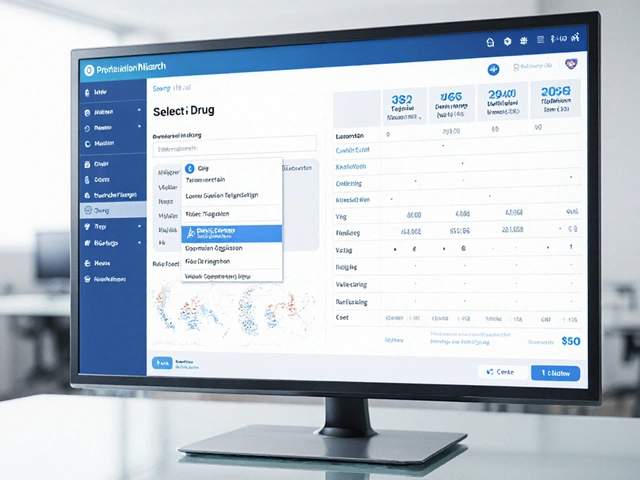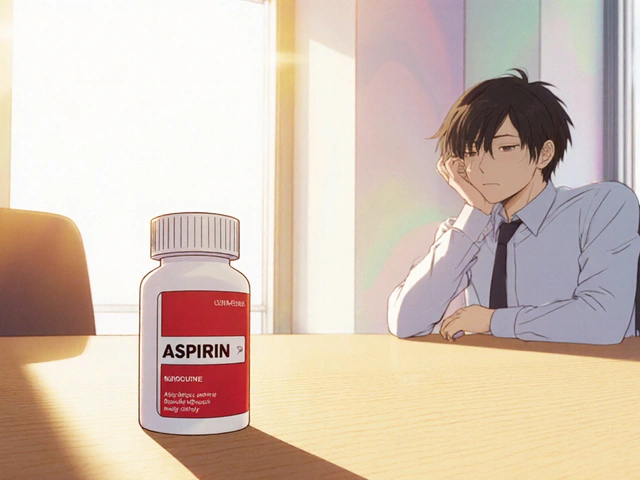Understanding Clindamycin Phosphate
Clindamycin Phosphate is a widely used antibiotic that belongs to the lincosamide class. It is utilized for treating a variety of bacterial infections, such as skin infections, respiratory tract infections, and even dental infections. In this article, we will discuss how Clindamycin Phosphate is connected to antibiotic resistance, a growing concern in the medical community. As we dive into this topic, it's important to understand what Clindamycin Phosphate is and how it works to fight against bacterial infections.
The Mechanism of Action of Clindamycin Phosphate
Clindamycin Phosphate works by inhibiting the synthesis of bacterial proteins. It does this by binding to the 50S ribosomal subunit in the bacterial cell, which prevents the attachment of amino acids to the growing peptide chain. As a result, the bacteria are unable to produce essential proteins, which leads to their eventual death. This mechanism of action is what makes Clindamycin Phosphate an effective treatment for many types of bacterial infections.
What is Antibiotic Resistance?
Antibiotic resistance occurs when bacteria evolve to become resistant to the effects of antibiotics. This can happen through various mechanisms, such as mutations in the bacterial DNA or the acquisition of resistance genes from other bacteria. When bacteria become resistant to antibiotics, it becomes increasingly difficult to treat infections caused by these resistant strains. This poses a significant threat to public health, as antibiotic resistance can lead to longer-lasting infections, more severe symptoms, and even death in some cases.
The Emergence of Clindamycin-Resistant Bacteria
Over the years, the use of Clindamycin Phosphate and other antibiotics has led to the emergence of resistant strains of bacteria. These strains have developed mechanisms that allow them to resist the effects of Clindamycin, rendering the antibiotic ineffective in treating infections caused by these resistant bacteria. The emergence of Clindamycin-resistant bacteria is a significant concern, as it limits the treatment options available for patients suffering from bacterial infections.
Factors Contributing to Clindamycin Resistance
There are several factors that contribute to the development of antibiotic resistance, including the overuse and misuse of antibiotics. Inappropriate prescribing of antibiotics, patients not completing their full course of treatment, and the use of antibiotics in agriculture are all factors that have contributed to the rise of antibiotic-resistant bacteria. Furthermore, the lack of new antibiotics being developed has exacerbated the problem, as there are fewer options available to treat infections caused by resistant bacteria.
Preventing the Spread of Clindamycin Resistance
There are several strategies that can help prevent the spread of Clindamycin resistance and other forms of antibiotic resistance. These include:
- Practicing good hygiene to prevent the spread of infections
- Using antibiotics only when prescribed by a healthcare professional
- Completing the full course of antibiotics, even if symptoms have improved
- Avoiding the use of antibiotics for viral infections, such as colds and flu
- Supporting efforts to reduce the use of antibiotics in agriculture
- Encouraging the development of new antibiotics and alternative treatments
By following these strategies, we can help slow the spread of antibiotic resistance and preserve the effectiveness of Clindamycin Phosphate and other antibiotics for future generations.
Conclusion
Clindamycin Phosphate is an important antibiotic that has been instrumental in treating various bacterial infections. However, the emergence of antibiotic resistance, including Clindamycin resistance, poses a significant threat to public health. By understanding the connection between Clindamycin Phosphate and antibiotic resistance, we can take steps to prevent the spread of resistance and ensure that this valuable antibiotic remains effective for years to come. It's crucial that we all do our part in preventing antibiotic resistance by using antibiotics responsibly, practicing good hygiene, and supporting efforts to develop new antibiotics and alternative treatments.







Ryan Moodley
Oh, the drama of blaming a single drug for the whole apocalypse! Clindamycin gets the spotlight, but the real villain is our reckless habit of popping pills like candy. We’re building resistance not because of one molecule, but because we treat antibiotics as a free‑for‑all. Think about it – the more we misuse, the louder the alarm bells ring, and the cheaper the excuse becomes to point fingers.
carol messum
In the grand tapestry of medicine, every thread matters, even the ones we barely notice. Clindamycin’s role is just a single stitch in a larger pattern of stewardship.
Jennifer Ramos
Thanks for the thorough breakdown! 😊 It’s good to see the mechanisms explained in plain terms – makes it easier for the rest of us to understand why finishing a prescription matters. Also, the hygiene tips are spot‑on.
Grover Walters
The article correctly outlines the ribosomal binding action of Clindamycin, yet it could benefit from a deeper discussion of inducible resistance genes such as erm(X). A balanced view of both pharmacodynamics and genetic adaptability would elevate the analysis.
Amy Collins
Honestly, this read feels like a rehash of old textbook jargon. Overuse, misuse, hygiene – same old story, same old buzzwords. Nothing groundbreaking here.
amanda luize
Do you ever wonder why the pharma giants never mention the hidden clauses in those “research grants”? Some say the push for new antibiotics is a façade, a smoke‑screen to keep old drugs like Clindamycin in perpetual demand. Colorful as it sounds, the shadows of profit often eclipse the pure science.
Chris Morgan
The so‑called "resistance crisis" is a myth.
Pallavi G
Hey everyone, I wanted to add a few practical points that might help us all think more critically about Clindamycin and resistance.
First, the dosage matters – sub‑therapeutic levels are a breeding ground for resistant strains, so it’s essential to follow the exact prescription.
Second, the duration of therapy should be the minimum effective period; longer courses don’t always mean better outcomes and can actually fuel resistance.
Third, combining topical Clindamycin with benzoyl peroxide in acne treatment has been shown to reduce resistance development by up to 30 % – a useful trick for dermatologists.
Fourth, there’s growing evidence that probiotic supplementation during antibiotic courses can help maintain gut flora balance, possibly limiting horizontal gene transfer of resistance genes.
Fifth, healthcare providers should regularly review local antibiograms; they give a snapshot of the current resistance patterns in your community and guide more precise prescribing.
Sixth, patients often think finishing a course is optional if they feel better; education at the pharmacy counter can dramatically improve adherence rates.
Seventh, agricultural use of antibiotics, including for growth promotion in livestock, can leak resistant bacteria into waterways, eventually reaching humans.
Eighth, the WHO’s Global Antimicrobial Resistance Surveillance System (GLASS) is a valuable resource for tracking trends – check it out if you want the latest data.
Ninth, investing in rapid diagnostic tests can reduce unnecessary prescriptions by distinguishing bacterial from viral infections in minutes.
Tenth, encouraging research into bacteriophage therapy offers an alternative pathway that bypasses traditional antibiotic resistance mechanisms.
Finally, personal hygiene – hand washing, wound care, and proper disinfection – remains one of the cheapest and most effective ways to curb spread.
By keeping these points in mind, we can collectively push back against the tide of resistance and preserve Clindamycin’s usefulness for future patients.
Rafael Lopez
Great points, Pallavi!,, Indeed,, adherence to dosage and duration is critical,, and the combination therapy you mentioned,, especially with benzoyl peroxide,, is a game‑changer,,; also,, the role of probiotics,, often overlooked,, deserves more attention.,, Thanks for the comprehensive list!!
Craig Mascarenhas
i think its all a hoax, the whole "resistance" narrative is just a ploy, dont trust the pharmas
aarsha jayan
What a vibrant discussion! 🌈 Let’s remember that collaboration and empathy are our strongest tools. Supporting each other with clear information helps everyone stay safe and informed.
Rita Joseph
I appreciate the inclusive tone, Aarsha. Adding to that, it’s useful to reference reputable guidelines-like those from the CDC-when advising patients, ensuring we all base our recommendations on solid evidence.